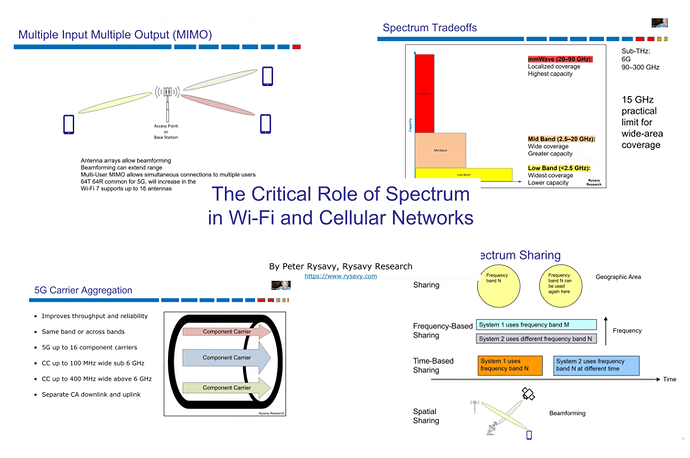Wireless communication is fundamental to our digital society, with radio spectrum the key enabling resource.
Understanding the critical role of spectrum provides deep insight into how wireless technologies function and how they will evolve.
This enlightening talk delves into the ingenious advancements in Wi-Fi and cellular networks to harness spectrum, including increasing efficiency, deploying new bands, aggregating channels, and dynamically sharing spectrum.
Despite huge progress, formidable challenges remain in meeting soaring demands for capacity, achieving global harmonization, and ensuring coexistence with existing services.
Key takeaways
- There is increasing demand for wireless spectrum from technologies like WiFi and 5G cellular networks, but the amount of usable spectrum is finite.
- Different spectrum bands have tradeoffs between coverage, capacity, and ability to support new technologies. The mid-band spectrum between 2 and 6 GHz is well-suited for 5G.
- Technologies are evolving to use spectrum more efficiently through techniques like carrier aggregation, advanced modulation, massive MIMO, and puncturing in WiFi 7.
- The US lacks a clear long-term national spectrum strategy and roadmap, putting it at a disadvantage compared to countries like China, which plan spectrum allocations years in advance.
- Spectrum sharing is complex with no one-size-fits-all solution, though approaches like beamforming, dynamic spectrum access databases, and sensing show promise if challenges are addressed.
- Harmonizing spectrum use globally through conferences helps drive economies of scale in devices and supports roaming, though the US diverges in some bands like 6 GHz assigned solely to WiFi.
Watch Video on YouTube: ![]() https://www.youtube.com/watch?v=e76WEsAxM58
https://www.youtube.com/watch?v=e76WEsAxM58
PDF: ![]()
Source: ![]()
